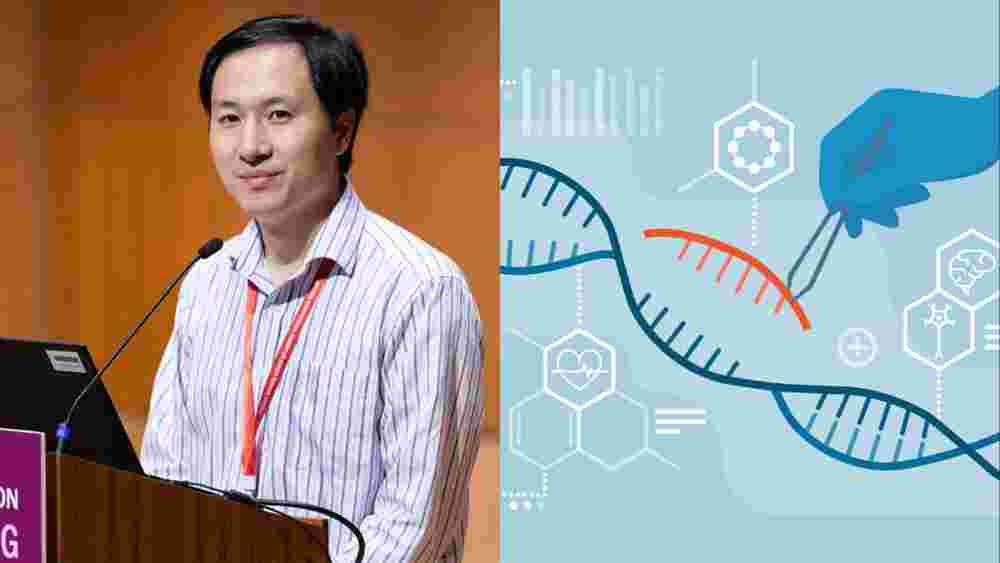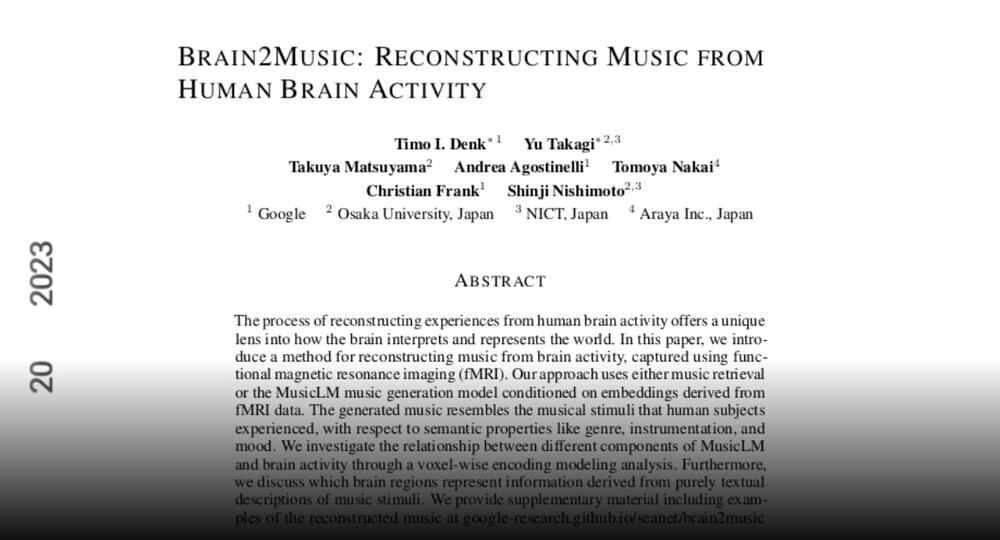With 147 fused benzene rings and 920 conjugated atoms, the nanoribbon shows optoelectronic properties that could compete with quantum dots.


How can we increase our lifespan by over two decades?
In this video, we dive into a comprehensive study involving over 700,000 U.S. veterans that reveals the immense power of eight healthy lifestyle habits.
These habits are not only vital for your longevity but also key to enhancing your personal wellness and contributing to public health.

Summary: Religious groups may find their credibility and financial support undermined with the growing use of AI and robot preachers, according to researchers.
The study involved experiments with the Mindar humanoid robot in Japan and Pepper in Singapore, both delivering sermons to audiences. Participants rated these robotic preachers as less credible than their human counterparts, contributing to decreased donations.
Despite some acceptance, the study highlights the importance of human connection and credibility in religious leadership.

South Korean scientists have announced the development of a room-temperature ambient-pressure superconductor. If the claim is verified, this will change the world. Superconductors transmit electricity without resistance and have a series of magnetic properties that make them invaluable in technological applications. Usually, superconductors need to be cooled down to very low temperatures. A superconductor capable of working outside the lab in regular conditions would be revolutionary.
However, the conditional clauses in the first paragraph are necessary. There have been previous claims of room-temperature superconductivity that have not panned out. The researchers uploaded a paper to arXiv, and it is unclear if it was submitted for peer review to a journal. IFLScience has emailed them to learn more about the research and the new material, which is called modified lead-apatite or LK-99.
One crucial aspect of superconductivity is critical temperature, the temperature below which the material becomes superconductive. The value stated for LK-99 is 127°C (261°F), meaning it could easily be employed in all environments on Earth. If this is confirmed, it would not be the only room-temperature superconductor. But it would be the first to not require enormous pressures to work.

He Jiankui, the Chinese scientist who faced international condemnation in 2018 for creating the first gene-edited children, has presented a new research proposal involving modifying human embryos to address the challenges of the ageing population. He, who was sentenced to three years in prison in 2019 for “illegal medical practices,” resurfaced last year and announced the opening of a research lab in Beijing.

When you turn on a lamp to brighten a room, you are experiencing light energy transmitted as photons, which are small, discrete quantum packets of energy. These photons must obey the sometimes strange laws of quantum mechanics, which, for instance, dictate that photons are indivisible, but at the same time, allow a photon to be in two places at once.
Similar to the photons that make up beams of light, indivisible quantum particles called phonons make up a beam of sound. These particles emerge from the collective motion of quadrillions of atoms, much as a “stadium wave” in a sports arena is due to the motion of thousands of individual fans. When you listen to a song, you’re hearing a stream of these very small quantum particles.
Every citizen should watch this. It’s brilliant.
This film was made to sell to high school media departments who purchased it to show to their juniors and seniors. Students in public high schools were being exposed to the concept of propaganda, especially given the context of World War II and the early Cold War. At this time there was an emphasis on educating citizens, including school children, about the role of propaganda. Would anyone make a film like this to run in schools involving media fake media or not?
Propaganda from all sides was studied including in history or social studies classes. Teachers used examples from Nazi Germany, Fascist Italy or Imperial Japan to illustrate how propaganda was used to control information and manipulate public opinion during the war.
In civics or government classes, students discussed propaganda in the context of democratic values, freedom of speech and the role of the press. This included conversations about the differences between propaganda, misinformation, and the free exchange of ideas.
In English or other language arts classes propaganda was discussed as a form of rhetoric or persuasion.
The early stages of the Cold War and the 1948 presidential election were events for discussion in classrooms. Teachers used these current events to talk about the role of propaganda in politics and international relations.

Warren Buffett has hailed artificial intelligence as a potential game-changer, but warned it could be disruptive, divisive, and dangerous.
AI promises to replace workers and harness new types of knowledge, generating lots of value and giving people more leisure time, the famed investor and Berkshire Hathaway CEO has said in interviews and during shareholders meetings in recent years, according to CNBC’s Warren Buffett Archive.
However, the nascent technology could also cause massive upheaval if it causes huge numbers of job losses, and could do enormous damage to the world if it’s used for the wrong reasons, Buffett cautioned.


Generative artificial intelligence technology such as ChatGPT could boost productivity for many workers in the years ahead. But some people are likely to lose their jobs in the process.
That’s according to Sam Altman, the CEO of OpenAI, the company behind ChatGPT. Altman said in June that AI’s development could provide the “most tremendous leap forward” for people’s quality of life. But he also said in March it’d be “crazy not to be a little afraid of AI” and its potential to create” disinformation problems or economic shocks.”